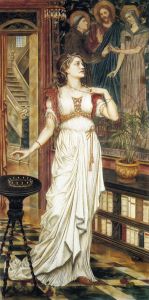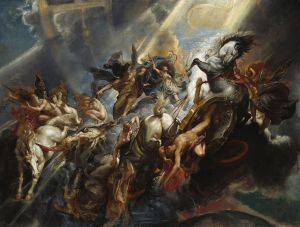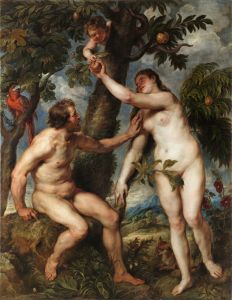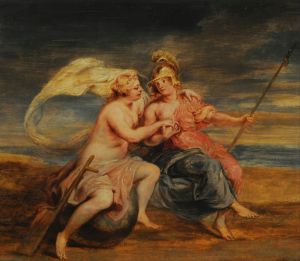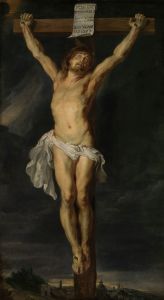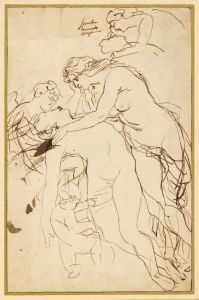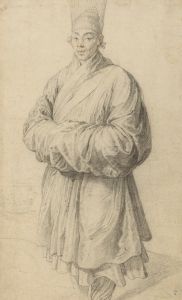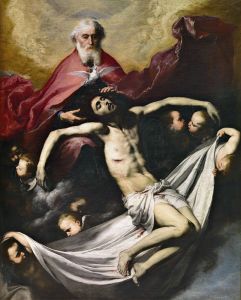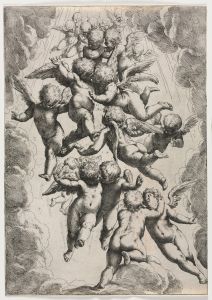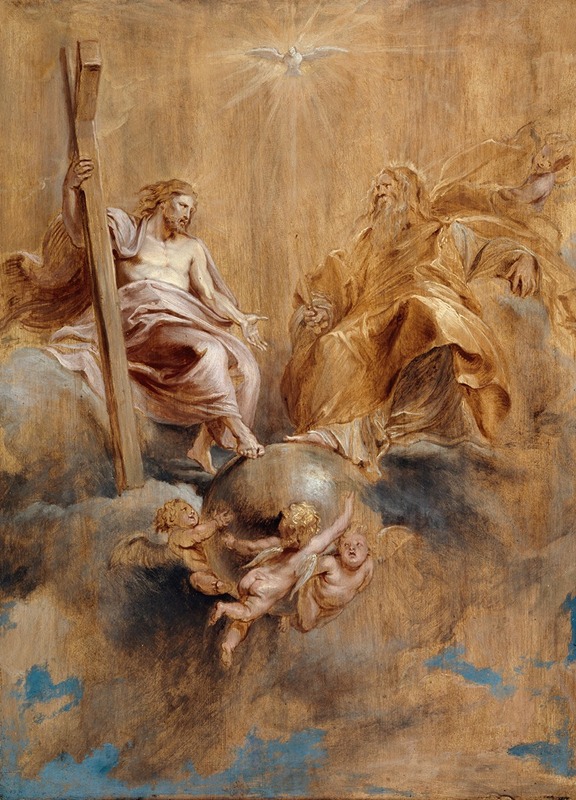
The Holy Trinity
A hand-painted replica of Peter Paul Rubens’s masterpiece The Holy Trinity, meticulously crafted by professional artists to capture the true essence of the original. Each piece is created with museum-quality canvas and rare mineral pigments, carefully painted by experienced artists with delicate brushstrokes and rich, layered colors to perfectly recreate the texture of the original artwork. Unlike machine-printed reproductions, this hand-painted version brings the painting to life, infused with the artist’s emotions and skill in every stroke. Whether for personal collection or home decoration, it instantly elevates the artistic atmosphere of any space.
Peter Paul Rubens, a prominent Flemish Baroque painter, created "The Holy Trinity" as a religious artwork that reflects his mastery of dramatic composition and emotional intensity. The painting depicts the central Christian theme of the Holy Trinity, which consists of God the Father, Jesus Christ the Son, and the Holy Spirit, often symbolized as a dove. This subject was a common theme in Christian art during the Baroque period, as it emphasized the theological concept of divine unity and the sacrifice of Christ for humanity.
In "The Holy Trinity," Rubens employs his characteristic use of dynamic movement, vivid color, and dramatic contrasts of light and shadow to convey a sense of divine majesty and spiritual significance. The composition typically includes God the Father holding the crucified body of Christ, with the Holy Spirit represented above them. The figures are often surrounded by angels or other celestial beings, enhancing the sense of heavenly grandeur. Rubens' ability to depict human emotion and physicality is evident in the expressions and gestures of the figures, which evoke a sense of reverence and compassion.
This painting is an example of Rubens' skill in combining religious devotion with artistic innovation. His works were highly sought after by both religious institutions and private patrons, and he often created altarpieces for churches and cathedrals. "The Holy Trinity" reflects the Counter-Reformation ideals of the Catholic Church, which sought to inspire faith and devotion through powerful and emotive imagery.
The exact date of creation for "The Holy Trinity" is not definitively documented, but it is generally attributed to Rubens' mature period, when he was at the height of his artistic career. The painting is housed in the Kunsthistorisches Museum in Vienna, Austria, where it remains an important example of Rubens' religious works.
As with many of Rubens' paintings, "The Holy Trinity" demonstrates his ability to blend theological themes with the artistic techniques of the Baroque era, making it a significant contribution to the history of Western art.






